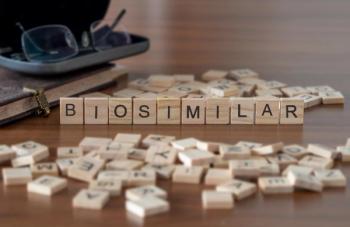
Patients With Ovarian Cancer May Be at Risk of Financial Toxicity Due to PARP Inhibitor Treatment
Key Takeaways
- PARP inhibitors for ovarian cancer have high out-of-pocket costs, leading to potential financial toxicity for patients.
- Cost-sharing may hinder treatment adherence, though its effects on oncologic outcomes are not well understood.
Treatment of ovarian cancer with poly (ADP-ribose) polymerase (PARP) inhibitors has a high out-of-pocket cost for patients, with substantial variation among them, according to a study.
Treatment of ovarian cancer (OC) with poly (ADP-ribose) polymerase (PARP) inhibitors has a high out-of-pocket cost for patients, with substantial variation among them, according to a study presented in conjunction with the Society of Gynecologic Oncology 2020 Annual Meeting on Women’s Cancer. Such inflated out-of-pocket costs for treatment coupled with the high overall health care spending by patients and third-party payers for PARP treatment may lead to financial toxicity.1
For this reason, cost-sharing is a potential obstacle for some patients to treatment with this highly effective medicine. Currently, researchers are unclear regarding the effects of cost-sharing for PARP on treatment adherence, oncologic endpoints, and social outcomes.1
PARP inhibitors have been proven to offer a substantial clinical benefit to patients with OC, yet the risk for financial toxicity is high due to the cost. For other disease sites, a $10 increase in out-of-pocket costs for oral anticancer treatment is found to be associated with a 10% to 20% increased likelihood of treatment discontinuation or delay. Currently, it is not well understood exactly how many patients with OC experience cost-sharing.1
In this study, patients with OC who were treated from 2014 to 2017 with PARP inhibitors were identified in MarketScan, a national health insurance claims database, in order to collect data on demographics, type of insurance, treatment duration, out-of-pocket costs, and total costs.1
For the researchers’ purposes, treatment duration was assessed from the first PARP drug claim to the final drug claim plus the supply duration of the final PARP prescription, and cost estimates were in dollars and adjusted to 2018.1
The results of the research showed that a total of 503 patients with a mean age of 56 years were treated with olaparib, niraparib, or rucaparib. The patients’ median treatment duration for PARP was 88 days, whereas the mean out-of-pocket cost for PARP was $305 per month.1
The mean out-of-pocket cost of care for patients with OC overall was $470 per month, and the mean total drug cost for PARP treatment was $12,966 per month, with the mean total cost for care overall coming out to $20,239 per month.1
Approximately 65% of patients had conventional insurance, such as a health maintenance organization or preferred provider organization, and 18% had a high-deductible plan. The out-of-pocket cost for PARP treatment was similar for those with the high-deductible, which was at a median of $41 per month, or conventional coverage, at a median of $39 per month.1
The results of the research emphasized that with such high total costs and vast variation on the market, those patients experiencing financial toxicity may have a higher likelihood of discontinuing this highly effective treatment for OC.1
REFERENCE
- Harrison RF, Fu S, Sun CC, et al. Out-of-pocket costs for PARP inhibitor treatment: Are ovarian cancer patients at risk for financial toxicity? In: Society of Gynecologic Oncology 2020 Annual Meeting on Women’s Cancer; March 27-March 31, 2020; Toronto, CA. Abstract 38.
Newsletter
Stay informed on drug updates, treatment guidelines, and pharmacy practice trends—subscribe to Pharmacy Times for weekly clinical insights.









































































































































































































